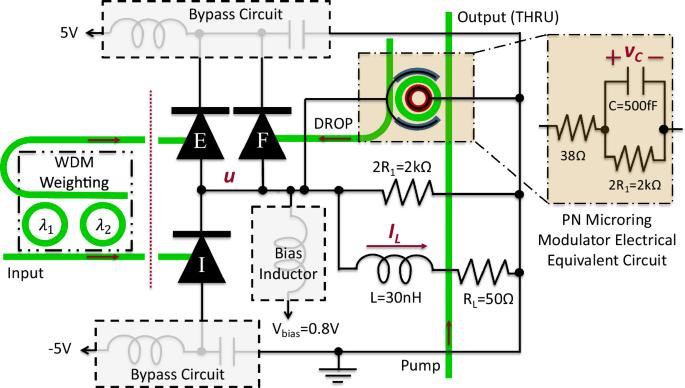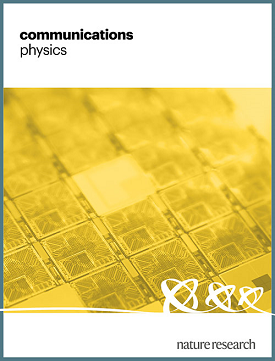设计单片硅绝缘体谐振器尖峰神经元
IF 5.4
1区 物理与天体物理
Q1 PHYSICS, MULTIDISCIPLINARY
引用次数: 0
摘要
人工智能系统越来越期待神经形态光子学的速度和低损耗、高带宽互连。硅光子技术已显示出创建大规模神经网络的前景。在这里,我们提出了一种单片硅光电子谐振器尖峰神经元。现有的光子尖峰神经元设计由于依赖于某些非线性效应、材料和器件而难以扩展。本文讨论的设计利用连续泵浦微光 PN 调制器传输的光反馈来实现可激发动态。它可以级联,能够以 GHz 的速度运行,并与用于线性加权的波分复用方案兼容。它是一种通过亚临界霍普夫分岔实现的 2 级可激励器件,由许多硅光子芯片代工厂中常见的器件构建而成。本文章由计算机程序翻译,如有差异,请以英文原文为准。


Design of a monolithic silicon-on-insulator resonator spiking neuron
Increasingly, artificial intelligent systems look to neuromorphic photonics for its speed and its low loss, high bandwidth interconnects. Silicon photonics has shown promise to enable the creation of large scale neural networks. Here, we propose a monolithic silicon opto-electronic resonator spiking neuron. Existing designs of photonic spiking neurons have difficulty scaling due to their dependence on certain nonlinear effects, materials, and devices. The design discussed here uses optical feedback from the transmission of a continuously pumped microring PN modulator to achieve excitable dynamics. It is cascadable, capable of operating at GHz speeds, and compatible with wavelength-division multiplexing schemes for linear weighting. It is a Class 2 excitable device via a subcritical Hopf bifurcation constructed from devices commonly found in many silicon photonic chip foundries. Silicon photonics can be used to create high-speed large-scale neuromorphic systems for artificial intelligent tasks. Here, the authors discuss the design details and behavior of a resonator spiking neuron that can be fabricated in a commercial silicon photonics foundry process.
求助全文
通过发布文献求助,成功后即可免费获取论文全文。
去求助
来源期刊

Communications Physics
Physics and Astronomy-General Physics and Astronomy
CiteScore
8.40
自引率
3.60%
发文量
276
审稿时长
13 weeks
期刊介绍:
Communications Physics is an open access journal from Nature Research publishing high-quality research, reviews and commentary in all areas of the physical sciences. Research papers published by the journal represent significant advances bringing new insight to a specialized area of research in physics. We also aim to provide a community forum for issues of importance to all physicists, regardless of sub-discipline.
The scope of the journal covers all areas of experimental, applied, fundamental, and interdisciplinary physical sciences. Primary research published in Communications Physics includes novel experimental results, new techniques or computational methods that may influence the work of others in the sub-discipline. We also consider submissions from adjacent research fields where the central advance of the study is of interest to physicists, for example material sciences, physical chemistry and technologies.
 求助内容:
求助内容: 应助结果提醒方式:
应助结果提醒方式:


